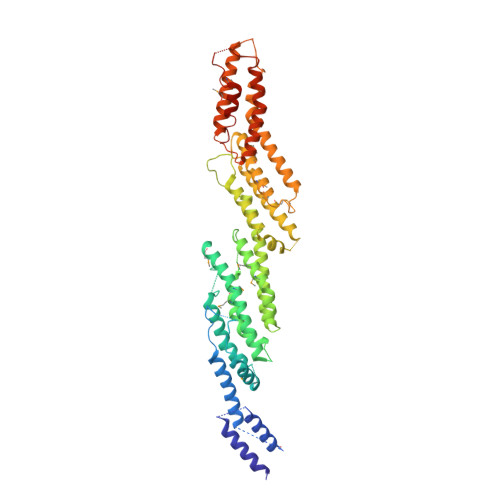Endosidin2 targets conserved exocyst complex subunit EXO70 to inhibit exocytosis.
Zhang, C., Brown, M.Q., van de Ven, W., Zhang, Z.M., Wu, B., Young, M.C., Synek, L., Borchardt, D., Harrison, R., Pan, S., Luo, N., Huang, Y.M., Ghang, Y.J., Ung, N., Li, R., Isley, J., Morikis, D., Song, J., Guo, W., Hooley, R.J., Chang, C.E., Yang, Z., Zarsky, V., Muday, G.K., Hicks, G.R., Raikhel, N.V.(2016) Proc Natl Acad Sci U S A 113: E41-E50
- PubMed: 26607451
- DOI: https://doi.org/10.1073/pnas.1521248112
- Primary Citation of Related Structures:
4RL5 - PubMed Abstract:
The exocyst complex regulates the last steps of exocytosis, which is essential to organisms across kingdoms. In humans, its dysfunction is correlated with several significant diseases, such as diabetes and cancer progression. Investigation of the dynamic regulation of the evolutionarily conserved exocyst-related processes using mutants in genetically tractable organisms such as Arabidopsis thaliana is limited by the lethality or the severity of phenotypes. We discovered that the small molecule Endosidin2 (ES2) binds to the EXO70 (exocyst component of 70 kDa) subunit of the exocyst complex, resulting in inhibition of exocytosis and endosomal recycling in both plant and human cells and enhancement of plant vacuolar trafficking. An EXO70 protein with a C-terminal truncation results in dominant ES2 resistance, uncovering possible distinct regulatory roles for the N terminus of the protein. This study not only provides a valuable tool in studying exocytosis regulation but also offers a potentially new target for drugs aimed at addressing human disease.
Organizational Affiliation:
Center for Plant Cell Biology, Institute for Integrative Genome Biology, University of California, Riverside, CA 92521; Department of Botany and Plant Sciences, University of California, Riverside, CA 92521;















